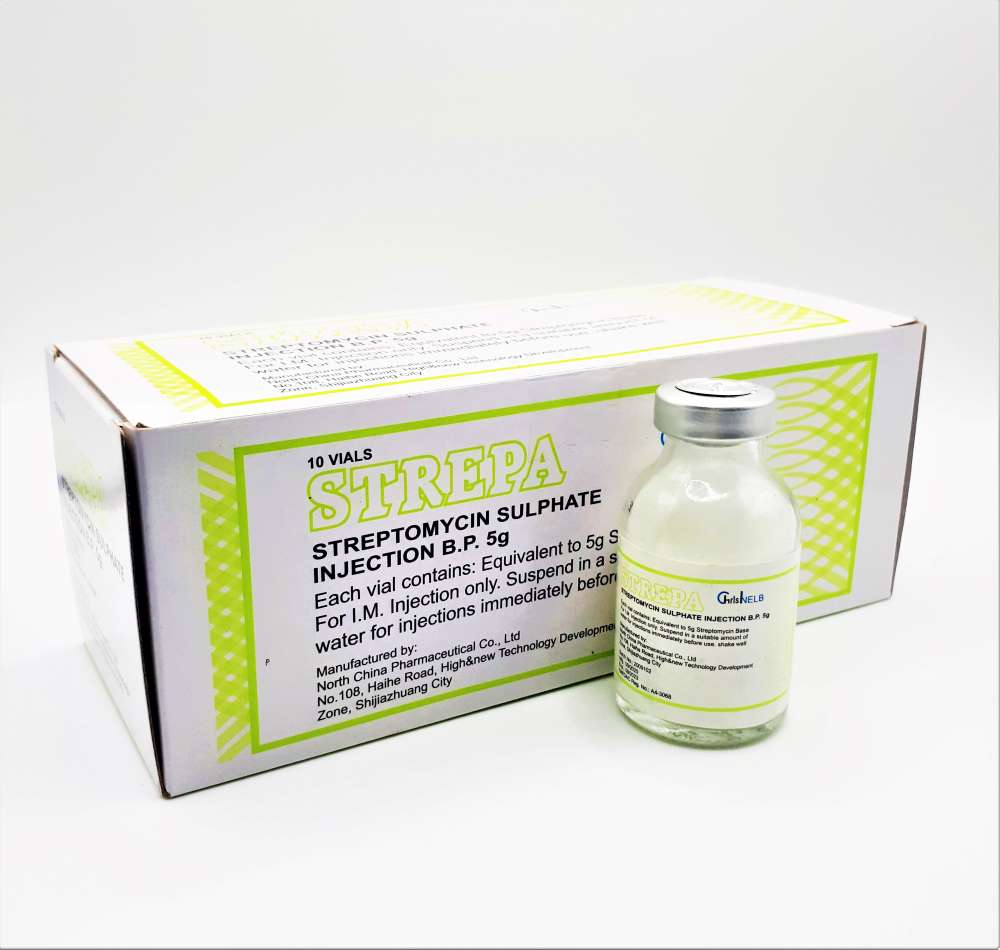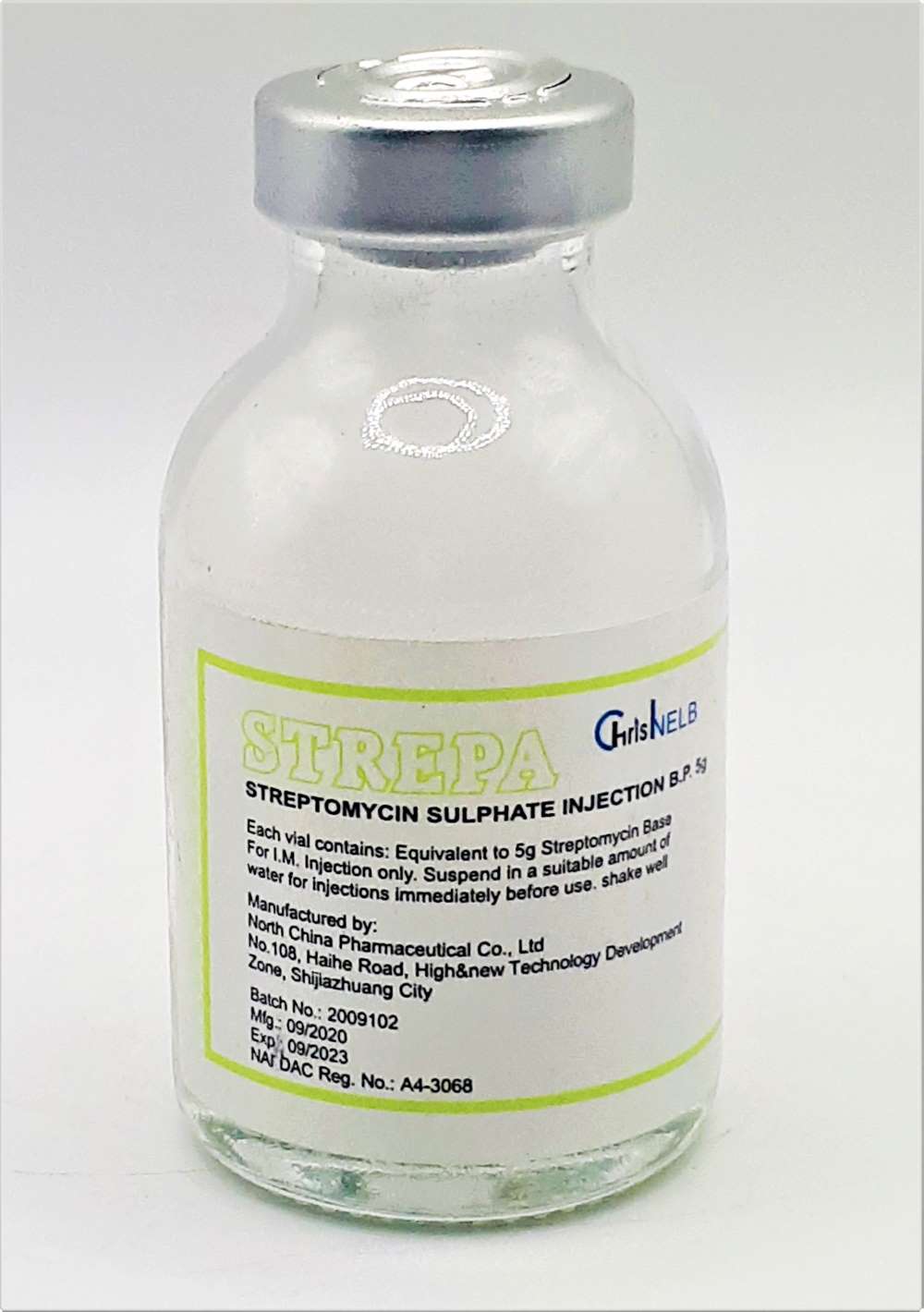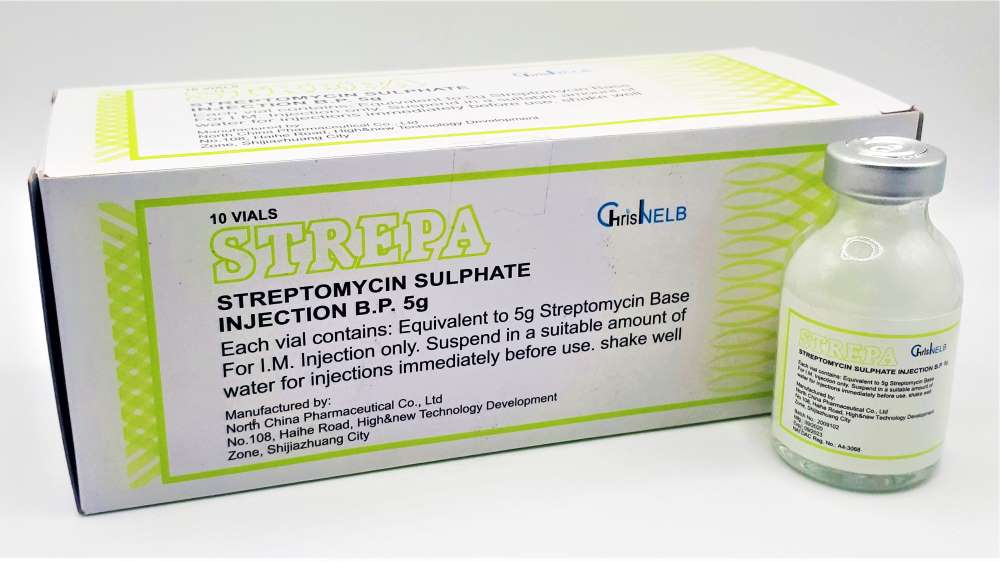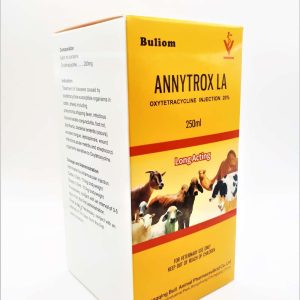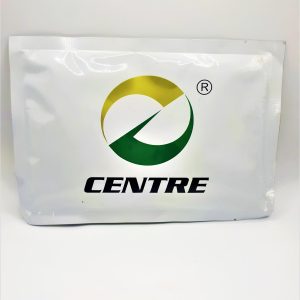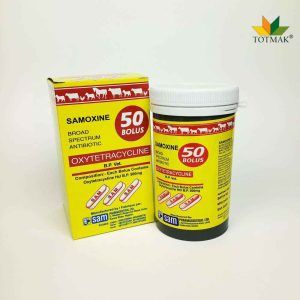STREPA STREPTOMYCIN INJ.
Price range: ₦900.00 through ₦9,000.00
An antibiotic used to treat bacterial infections etc. Streptomycin Sulphate Injection B.P. 5g. Each vial contains: Equivalent to 5g Streptomycin Base For I.M. Injection only. Suspend in a suitable amount of water for injections immediately before use. Shake well
INDICATIONS AND USES
Streptomycin is indicated for the treatment of individuals with moderate to severe infections caused by susceptible strains of microorganisms in the specific conditions listed below:
Mycobacterium tuberculosis: The Advisory Council for the Elimination of Tuberculosis, the American Thoracic Society, and the Center for Disease Control recommend that either streptomycin or ethambutol be added as a fourth drug in a regimen containing isoniazid (INH), rifampin and pyrazinamide for initial treatment of tuberculosis unless the likelihood of INH or rifampin resistance is very low. The need for a fourth drug should be reassessed when the results of susceptibility testing are known. In the past when the national rate of primary drug resistance to isoniazid was known to be less than 4% and was either stable or declining, therapy with two and three drug regimens was considered adequate. If community rates of INH resistance are currently less than 4%, an initial treatment regimen with less than four drugs may be considered.
Streptomycin is also indicated for the therapy of tuberculosis when one or more of the above drugs is contraindicated because of toxicity or intolerance. The management of tuberculosis has become more complex as a consequence of increasing rates of drug resistance and concomitant HIV infection. Additional consultation from experts in the treatment of tuberculosis may be desirable in those settings. Non-tuberculosis infections: The use of streptomycin should be limited to the treatment of infections caused by bacteria that have been shown to be susceptible to the antibacterial effects of streptomycin and which are not amenable to therapy with less potentially toxic agents.
Pasteurella pestis (plague),
Francisella tularensis (tularemia),
Brucella,
Calymmatobacterium granulomatis (donovanosis, granuloma inguinale),
H. ducreyi (chancroid),
H. influenzae (in respiratory, endocardial, and meningeal infections concomitantly with another antibacterial agent),
K. pneumoniae pneumonia (concomitantly with another antibacterial agent),
E. coli, Proteus, A. aerogenes, K. pneumoniae, and Enterococcus faecalis in urinary tract infections, Streptococcus viridans, Enterococcus faecalis (in endocardial infections concomitantly with penicillin), Gram-negative bacillary bacteremia (concomitantly with another antibacterial agent).
DOSAGE AND ADMINISTRATION
Intramuscular Route Only
For adults: 1 to 2 grams in divided doses every 6 to 12 hours for moderate to severe infections. Doses should generally not exceed 2 grams per day.
For children: 20 to 40 mg/kg/day (8 to 20 mg/lb/day) in divided doses every 6 to 12 hours.
TULAREMIA: One to 2 g daily in divided doses for 7 to 14 days until the patient is afebrile for 5 to 7 days.
PLAGUE: 2 grams of streptomycin daily in two divided doses should be administered intramuscularly. A minimum of 10 days of therapy is recommended.
BACTERIAL ENDOCARDITIS:
a. Streptococcal endocarditis: In penicillin-sensitive alpha and non-hemolytic streptococcal endocarditis (penicillin MIC ≤0.1 mcg/mL), streptomycin may be used for 2-week treatment concomitantly with penicillin. The streptomycin regimen is 1g b.i.d. for the first week, and 500 mg b.i.d. for the second week. If the patient is over 60 years of age, the dosage should be 500 mg b.i.d. for the entire 2-week period.
b. Enterococcal endocarditis: Streptomycin in doses of 1g b.i.d. for 2 weeks and 500 mg b.i.d. for an additional 4 weeks is given in combination with penicillin. Ototoxicity may require termination of the streptomycin prior to completion of the 6-week course for treatment.
CONCOMITANT USE WITH OTHER AGENTS:
For concomitant use with other agents to which the infecting organism is also sensitive: Streptomycin is considered a second-line agent for the treatment of gram-negative bacillary bacteremia, meningitis, and penumonia; brucellosis; granuloma inguinale; chancroid, and urinary tract infection.
SIDE EFFECTS
The following reactions are common: vestibular ototoxicity (nausea, vomiting, and vertigo); paresthesia of face; rash; fever; urticaria; angioneurotic edema; and eosinophilia.
The following reactions are less frequent: cochlear ototoxicity (deafness); exfoliative dermatitis; anaphylaxis; azotemia; leucopenia; thrombocytopenia, pancytopenia; hemolytic anemia; muscular weakness; and amblyopia.
CONTRA-INDICATIONS
A history of clinically significant hypersensitivity to streptomycin is a contraindication to its use. Clinically significant hypersensitivity to other aminoglycosides may contraindicate the use of streptomycin because of the known cross-sensitivity of patients to drugs in this class.
STORAGE INSTRUCTIONS:
Store below 30°C. Protect from Light and moisture.
KEEP OUT OF REACH OF CHILDREN.
Validity: Three years
Additional information
| Weight | N/A |
|---|---|
| Vial (s) | 1 Vial, Pack (10 Vials) |

